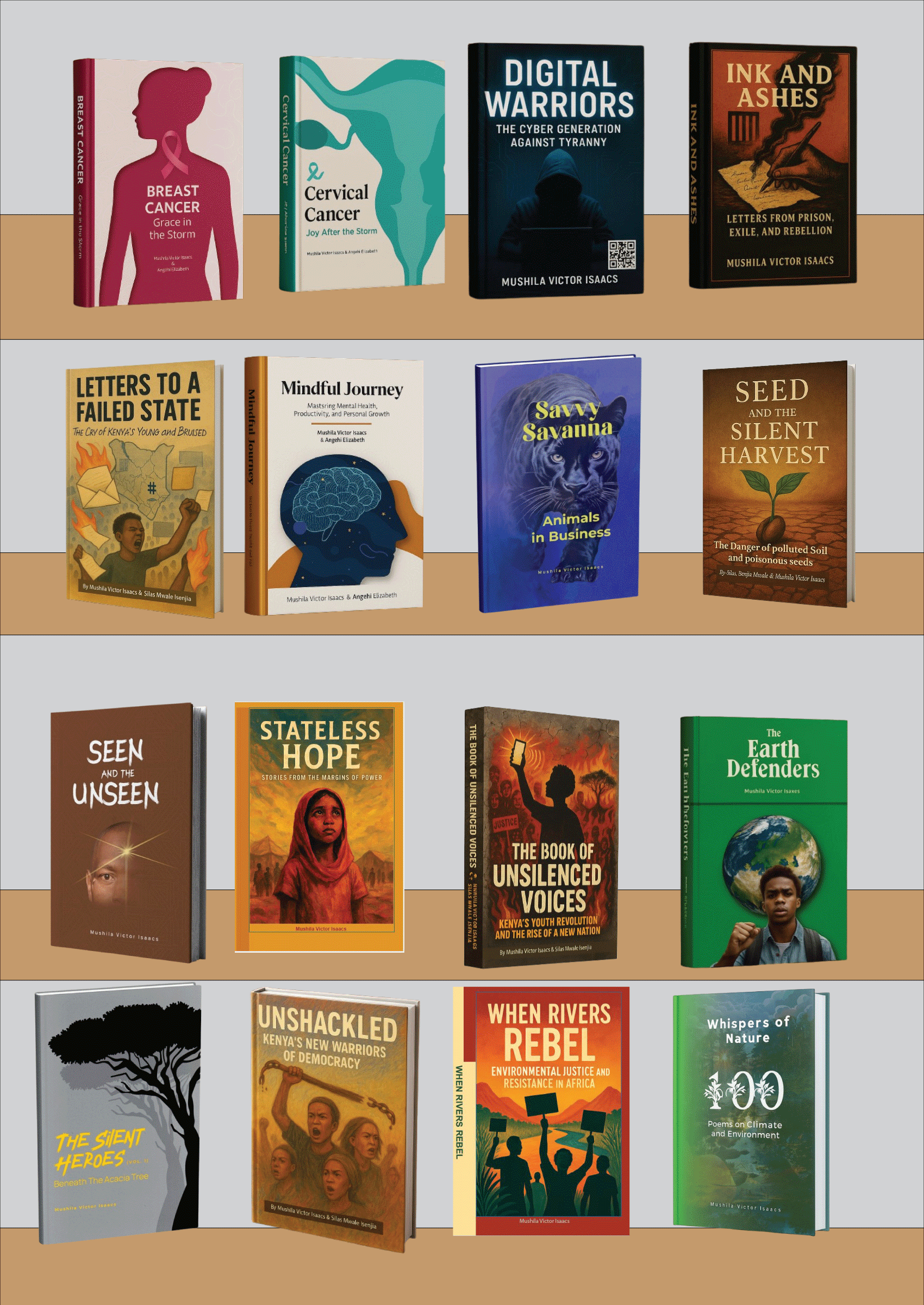WHEN RIVERS REBEL
Environmental Justice and Resistance in Africa
About the Book
When rivers rebel, they do not whisper—they roar.
When Rivers Rebel is a powerful exploration of environmental justice and resistance across Africa. From climate marches in Lagos to ancestral rituals along the Zambezi, it weaves together stories of struggle, spirituality, and survival. Uncovering the deep ties between hydropolitics, land dispossession, and indigenous wisdom, this book challenges exploitation and inspires radical hope.
Featuring footnoted case studies, interactive QR codes, policy tools, and visionary ideas for river parliaments, it is both a call to action and a celebration of resilience. For anyone who dares to listen—this is your riveric awakening.
Chapter One, Rivers as Witnesses of History, portrays Africa’s great rivers—the Nile, Congo, Niger, Zambezi, and Tana—as living archives of memory, resistance, and prophecy. Each river embodies both the glory of civilizations and the scars of colonial exploitation, displacement, and environmental injustice. From the “Nile’s contested waters in the age of mega-dams to the Congo’s haunted currents of extractive violence, from the Niger Delta’s oil-poisoned wetlands to the Zambezi and Tana’s dam-induced displacements, these rivers reveal how the struggle for sovereignty, justice, and ecological survival flows through Africa’s landscapes. Far from passive waterways, they are political beings demanding recognition, echoing Indigenous worldviews that see rivers as relatives rather than resources. As the climate crisis deepens, the rivers rebel—reminding us that to defend them is to defend Africa’s future.
Rivers as living beings carrying memory, resistance, and prophecy.
- Nile – contested waters, mega-dams, and sovereignty struggles.
- Congo – haunted by extractive violence and colonial plunder.
- Niger – poisoned wetlands of the Delta, resistance against oil.
- Zambezi – displacement and ecological damage from dam projects.
- Tana – struggles of communities uprooted by development schemes.
Africa’s rivers are not just resources—they are political beings with memory and agency. Defending them is inseparable from defending Africa’s sovereignty, justice, and ecological survival.
This chapter explores how Africa’s rivers have been reshaped by the politics of mega-dams, projects often celebrated as symbols of progress but riddled with displacement, ecological devastation, and inequity. From Ethiopia’s Grand Renaissance Dam and Ghana’s Akosombo Dam to Kenya’s Turkwel Gorge and Congo’s Inga III, the stories reveal how rivers have been weaponized in national and regional power struggles, while local communities bear the brunt of dispossession. Yet amidst the concrete, resistance emerges—grassroots activism, women’s cooperatives, and youth networks demanding just, inclusive, and sustainable approaches to water governance.
- Mega-dams as contested symbols of sovereignty, modernity, and dependency.
- The tension between national pride and local suffering.
- Resistance as both survival and imagination in the face of displacement.
- GERD (Ethiopia): National sovereignty vs. Egypt and Sudan’s survival anxieties; displacement of 20,000 Ethiopians.
- Akosombo (Ghana): 80,000 displaced, 700 villages submerged, long-term cultural and ecological loss.
- Turkwel (Kenya): Financial scandal, failed irrigation promises, pastoralist dispossession.
- Inga III (DRC): Export-oriented electricity while Congolese communities remain in the dark.
Mega-dams in Africa embody both dreams of development and realities of dispossession. They challenge us to ask not only how water is controlled, but who benefits, who pays the price, and how resistance can reimagine hydropolitics for justice and sustainability.
- 1–30 copies: KSh 1,200 each
- 31–50 copies: KSh 1,000 each
- 51–200 copies: KSh 600 each
- 201–500 copies: KSh 500 each
- 501–1,000 copies: KSh 400 each
Free delivery within Nairobi and its environs.


